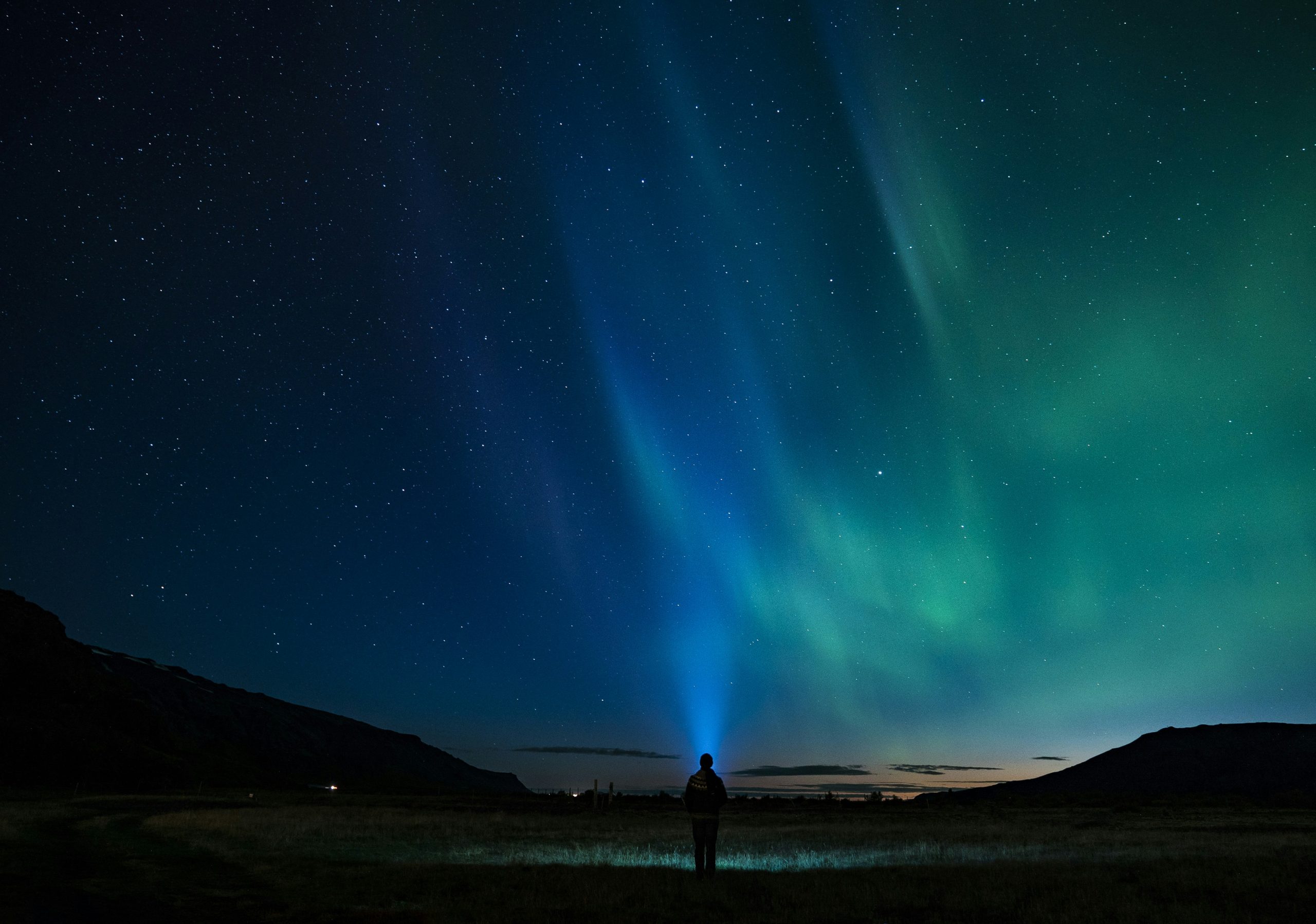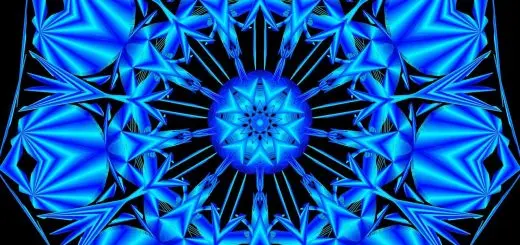The Role of Animals in Ancient Rituals and Spirituality

Looking for more amazing products? Check out our online store and explore our collection here! Happy shopping!
Before diving in, please note: This post is for informational purposes only. If you’d like to know more about how we approach topics, feel free to check out our friendly Disclaimer Page.
Hey there, amazing readers! 
We’re committed to delivering quality posts, and your support (even just sticking around despite the ads) means everything to us. So, bear with us, and thanks for helping us keep the good vibes rolling. Now, on to the fun stuff!
TRANSLATE BUTTON AT THE END OF THE ARTICLE
A Quick Overview
Have you ever stood in awe of the bond between humans and animals throughout history?
This connection goes way beyond companionship; it stretches deep into rituals, spirituality, and belief systems.
Ancient cultures around the globe embraced animals in their ceremonies, viewing them as sacred beings intertwined with their spiritual practices.
Today, let’s take a delightful journey through the fascinating role animals played in ancient rituals and spirituality.
We’ll discover how they were revered, symbolized, and often called upon to guide and protect the living.
Exploring the Sacred Bonds Between Animals and Humans
From the earliest days of humankind, animals have held a special place in our hearts and minds.
Remember the stories your grandparents told about animals being guardians or guides?
Many ancient cultures viewed animals as more than just fellow inhabitants of the earth.
They believed animals had unique spirits and powers that could connect them with the divine.
Take the Egyptians, for example.
They worshipped cats, considering them sacred creatures that protected homes and souls.
The goddess Bastet, often depicted as a lioness or a woman with a cat’s head, symbolized home, fertility, and domesticity.
Similarly, in Indigenous cultures, animals were seen as relatives and protectors.
The bond was not simply physical but spiritual, creating a profound relationship that transcended the ordinary.
In many tribal communities, storytelling is a vital way to pass on these sacred ties.
Legends often feature animals that embody wisdom, bravery, or cunning.
They were viewed as teachers, imparting lessons that helped people navigate their lives.
Personal stories often involve encounters with animals that feel almost mystical.
They remind us of the interconnectedness of life.
Animals were more than companions; they were conduits of the spiritual world.
They represented the essence of nature and the universe, instilling a sense of respect and reverence in ancient peoples.
This sacred bond laid the foundation for the intricate roles animals would play in rituals and ceremonies, shaping spiritual beliefs for generations.
Animals as Spiritual Symbols Across Ancient Cultures
Different cultures celebrated animals in various ways, attributing distinct meanings and values to them.
In ancient Mesopotamia, for instance, the bull was a symbol of strength and fertility.
Folklore often depicted it as a protector against chaos.
On the flip side, in many African tribes, elephants represented wisdom and longevity.
Their majestic presence commanded respect and admiration, inspiring countless stories and rituals.
The symbolism surrounding animals can be deeply personal and culturally specific.
In many Native American tribes, the eagle is revered as a messenger to the Creator.
Feathers from this noble bird were used in rituals to honor the spirit world and seek guidance.
Discover "Dog Care: Learning How to Care for Your Furry Friend
"
The symbolism of the animal transcended its physical form, embodying a spiritual connection that was both sacred and powerful.
In some ancient cultures, animals embodied the qualities humans aspired to.
The lion represented courage and leadership, while the swan symbolized grace and beauty.
These animals often appeared in art, literature, and storytelling as representations of human virtues.
We can find evidence of this in the mythological tales that have been passed down through generations.
This rich tapestry of animal symbolism not only showcases the diversity of beliefs but also reflects the values and aspirations of each culture.
It’s fascinating to see how these ancient associations still resonate today.
They remind us of our shared humanity and the universal themes that connect us across time and space.
Ritual Significance of Animal Sacrifice in Traditions
One of the most striking aspects of ancient rituals is the practice of animal sacrifice.
It may sound shocking today, but for many ancient cultures, it was a deeply spiritual act meant to honor the gods and ensure blessings for the community.
Sacrifices were seen as offerings, a way to show respect and gratitude.
In the Aztec civilization, for example, sacrifices were integral to their religious beliefs.
They believed that the sun required human and animal blood to rise each day.
This practice was seen as a necessary cycle, ensuring the continuation of life.
While this may seem brutal from a modern perspective, for the Aztecs, it was an essential part of their connection to the divine.
Similarly, in ancient Greece, animal sacrifices were common during religious festivals.
Goats and sheep were often offered to deities like Zeus and Athena.
These acts weren’t just about death; they were about communion with the gods.
The meat was shared among the community, reinforcing social bonds and instilling a sense of unity.
Rituals involving animal sacrifice varied widely, each culture infusing its practices with unique beliefs and significance.
Even today, the echoes of these ancient practices can be found in various religious ceremonies, reminding us of the enduring power of tradition and belief in the spiritual realm.
Totems: How Animals Represent Spiritual Guides
Totems are fascinating symbols of spiritual guidance found in many Indigenous cultures.
These sacred emblems represent a group or clan’s connection to a specific animal, often believed to embody its spirit.
Each totem carries unique traits and qualities that inspire the people it represents.
Imagine a community rallying around a wolf totem.
They might see the wolf as a symbol of loyalty, teamwork, and communication.
Through stories passed down orally, members of the community learn to embody these qualities in their own lives.
This connection to the totem creates a sense of identity and belonging, bridging the gap between the physical and spiritual worlds.
Totems also serve as reminders of the lessons animals impart.
The bear might symbolize strength and bravery, while the turtle could represent patience and wisdom.
Many Indigenous cultures incorporate totems into their rituals, using them to seek guidance and protection.
When facing challenges, individuals may call upon their totem spirit for support.
The profound relationship between animals and people through totems illustrates how we can find meaning and guidance in nature.
These symbols remind us that we are part of a larger community, interconnected with all living beings.
The concept of totems continues to inspire individuals, encouraging us to reflect on the qualities we aspire to embody.
The Role of Pets in Ancient Family and Clan Rituals
Pets have made their mark on spiritual practices in various ancient cultures.
They often held a special place within families and clans, embodying love, loyalty, and companionship.
Let’s take a closer look at how pets played significant roles in ancient rituals.
In ancient Egypt, cats were revered not just for their grace, but for their protective qualities.
They were seen as guardians of the household, and families would often include them in rituals aimed at securing blessings and protection.
When a beloved pet died, families would go to great lengths to honor them, sometimes even mummifying them and burying them with great respect, showcasing their significance in the family unit.
Similarly, in some Celtic traditions, dogs were considered sacred and were believed to possess healing powers.
Families might have included their dogs in rituals focused on health and protection.
The sight of a dog during a ceremony could signify the presence of a protective spirit, adding an extra layer of meaning to the ritual.
The roles pets played were not only functional but deeply emotional.
They provided comfort and companionship, creating bonds that transcended species.
The rituals surrounding pets allowed families to express their love and grief, connecting them to their ancestors and the spiritual world.
Even today, this bond continues, reminding us of the enduring legacy of our furry friends.
Shamanism: Channeling Animal Spirits for Healing
Shamanism, with its deep roots in ancient spiritual practices, often involves channeling animal spirits for healing.
Shamans, acting as intermediaries between the physical and spiritual realms, frequently call upon animal spirits for guidance and power.
This practice has existed across many cultures and is an intriguing aspect of ancient rituals.
During shamanic journeys, practitioners may enter altered states of consciousness to connect with animal spirits.
These spirits provide insights, wisdom, and healing energy.
For instance, a shaman might summon the spirit of an eagle for clarity, or a bear for strength.
This connection allows the shaman to access a wealth of knowledge and support.
Healing rituals often incorporate the presence of animals, whether through animal imagery, feathers, or even the participation of live animals in ceremonies.
The belief in the healing power of animals underscores the interconnectedness of all living beings.
When a community witnesses the healing effects of these practices, it reinforces the bond between humans and animals.
The transformative power of animal spirits in shamanism reflects our collective yearning for connection and healing.
It demonstrates how ancient practices can provide comfort and support, reminding us that we are never truly alone in our struggles.
Mythical Creatures: Blending Reality and Spirituality
Mythical creatures enrich our understanding of the human-animal connection in ancient spirituality.
These fantastical beings often blend characteristics of real animals with supernatural elements, creating symbols that embody deeper truths.
Think of griffins, centaurs, or dragons; each holds a unique place in various mythologies worldwide.
Take the dragon, for instance.
In many cultures, dragons symbolize power, wisdom, and protection.
In China, they are revered as benevolent beings, often representing strength and good fortune.
Their presence in ceremonies and art highlights their importance in the spiritual landscape.
Similarly, in Greek mythology, centaurs symbolize the duality of human nature, embodying both the wild and civilized aspects of existence.
These creatures often appear in stories that explore themes of balance and self-discovery.
Their existence invites us to reflect on our own complexities, showcasing how ancient narratives continue to resonate today.
Mythical creatures also serve as gateways to understanding the unknown.
They allow ancient cultures to explore themes of transformation, courage, and the mysteries of life.
By blending reality with the fantastical, these beings remind us of our imagination’s power, inviting us to dream and reflect on our spiritual journeys.
Animal Masks: Transformative Symbols in Ceremonies
Animal masks have been a significant part of various ancient ceremonies across cultures.
These masks serve not only as artistic expressions but also as transformative symbols that connect humans with the spirit of the animal represented.
They can change the wearer’s identity, allowing them to embody the qualities of the animal during the ritual.
In many African tribes, masks are used in dances and ceremonies to invoke specific animal spirits.
When donned, these masks enable the wearer to channel the animal’s attributes, whether it’s the power of a lion or the grace of a gazelle.
The ritual becomes a dynamic interaction between the physical and spiritual worlds.
In the Native American tradition, masks are often used in storytelling and ceremonial dances.
The wearer transforms into the animal, participating in ancient narratives that teach important lessons about life, nature, and the cosmos.
This practice fosters a deeper understanding of the interconnectedness of all living beings.
Animal masks bridge the gap between humans and animals, allowing participants to explore their relationships with the natural world.
They serve as a powerful reminder of the importance of respecting and honoring the spirits of all creatures, reinforcing our bond with nature.
Festivals Celebrating Animal Deities and Spirits
Festivals celebrating animal deities and spirits have been integral to many ancient cultures.
These events serve as communal expressions of reverence, gratitude, and celebration of the animals that hold significance in spiritual beliefs.
They often involve vibrant rituals, music, dance, and feasting.
In Hindu culture, the festival of Makar Sankranti celebrates the sun’s transition into Capricorn, often associated with the revered cow.
During this time, people honor cows through rituals, decorate them with flowers, and offer them special treats.
The festival embodies gratitude for the cow’s contributions to agriculture and sustenance, highlighting the animal’s sacred status.
Similarly, in ancient Rome, the Lupercalia festival honored the she-wolf that nurtured the founders of Rome, Romulus and Remus.
Celebrated with feasting and rituals, this festival showcased the city’s gratitude towards the she-wolf, reinforcing the bond between animals and the community’s identity.
These festivals not only express devotion but also foster a sense of unity within communities.
They remind participants of their shared beliefs and values, creating lasting memories and strengthening cultural identity.
It’s fascinating to see how these celebrations have persisted in various forms, continuing to honor the spiritual connection with animals.
The Influence of Animal Behavior on Ritual Practices
Animals have always fascinated us, and their behaviors have profoundly influenced ancient rituals.
Observing animals in their natural habitats allowed early humans to gain insights into survival and social dynamics.
This understanding often translated into spiritual practices.
For example, the migration patterns of birds could inspire rituals tied to seasonal changes.
Communities would gather to celebrate the arrival of migratory birds, marking the transition from one season to another.
These observances helped reinforce the connection between nature and spirituality, demonstrating how closely intertwined our lives are with the animal kingdom.
In agricultural societies, the behaviors of domesticated animals played a crucial role in shaping rituals.
The cycles of sheep and cattle, for example, influenced planting and harvesting schedules.
Ceremonies would often be held to ensure a successful yield, further illustrating the deep connection between human existence and the animal world.
Even today, we can see remnants of these ancient practices.
Many cultures still observe seasonal rituals that coincide with animal behaviors, reminding us of the enduring influence of the natural world on our spiritual lives.
Animals continue to inspire and inform our understanding of the universe.
Conservation of Rituals: Modern Takes on Ancient Beliefs
As we navigate the modern world, the conservation of ancient rituals continues to resonate.
Many cultures strive to preserve their spiritual practices, ensuring that the wisdom of the past is not lost.
This resurgence often involves reinterpreting old beliefs in light of contemporary values.
In recent years, there’s been a growing interest in animal rights and welfare, prompting a reevaluation of some traditional practices.
Communities are finding ways to honor their spiritual connections without causing harm.
This evolution reflects a broader understanding of the interconnectedness of all life.
Artisans and cultural practitioners are also incorporating modern elements into ancient rituals, blending traditional symbolism with contemporary expressions.
This fusion allows for a rich dialogue between past and present, creating vibrant cultural experiences that honor history while embracing change.
As we celebrate the conservation of these rituals, we also recognize the importance of respecting the animals that inspire them.
The modern movement towards sustainable practices echoes the reverence that ancient cultures held for the natural world.
It’s a beautiful reminder of our shared responsibility to protect the creatures that have shaped our spiritual journeys.
Understanding the Legacy of Animals in Spirituality Today
Animals continue to play a vital role in our spiritual lives, even in the modern age.
The legacy of their influence is woven into our beliefs, practices, and cultural expressions.
From totem animals to spirit guides, the connection remains strong, reminding us that we are part of a larger tapestry of life.
Many of us find solace in the companionship of pets, experiencing their unwavering loyalty and love.
We often attribute human emotions and qualities to them, reflecting our deep bond.
This connection speaks to the timeless nature of our relationship with animals and the enduring impact they have on our lives.
In various spiritual practices today, animals are still invoked as symbols of strength, guidance, and protection.
Whether it’s through meditation, art, or ritual, their presence resonates with us, providing comfort and inspiration.
As we navigate the complexities of modern life, these connections can offer grounding and a sense of belonging.
The legacy of animals in spirituality encourages us to honor our relationship with nature and the creatures that inhabit it.
It invites us to reflect on the lessons they impart and the wisdom they provide.
Ultimately, it’s a celebration of the enduring bond between humans and animals—a bond that transcends time, culture, and belief.
Conclusion
The role of animals in ancient rituals and spirituality unveils a rich tapestry of belief, reverence, and interconnectedness.
From sacred symbols to transformative masks, animals have served as guides, protectors, and companions throughout human history.
Their influence continues to resonate in our spiritual practices today.
As we reflect on this legacy, we’re reminded of the profound bonds we share with the animal kingdom and the invaluable lessons they impart.
Let’s cherish and celebrate these connections, honoring the wisdom of the past while embracing the possibilities of the future.

The Enlightenment Journey is a remarkable collection of writings authored by a distinguished group of experts in the fields of spirituality, new age, and esoteric knowledge.
This anthology features a diverse assembly of well-experienced authors who bring their profound insights and credible perspectives to the forefront.
Each contributor possesses a wealth of knowledge and wisdom, making them authorities in their respective domains.
Together, they offer readers a transformative journey into the realms of spiritual growth, self-discovery, and esoteric enlightenment.
The Enlightenment Journey is a testament to the collective expertise of these luminaries, providing readers with a rich tapestry of ideas and information to illuminate their spiritual path.
Our Diverse Expertise
While our primary focus is on spirituality and esotericism, we are equally passionate about exploring a wide range of other topics and niches 

To ensure we provide the most accurate and valuable insights, we collaborate with trusted experts in their respective domains 
Our blog originally focused on spirituality and metaphysics, but we’ve since expanded to cover a wide range of niches. Don’t worry—we continue to publish a lot of articles on spirituality! Frequently visit our blog to explore our diverse content and stay tuned for more insightful reads.
Hey there, amazing reader! 
Check out our store here and take a peek at some of our featured products below! Thanks for being awesome!










